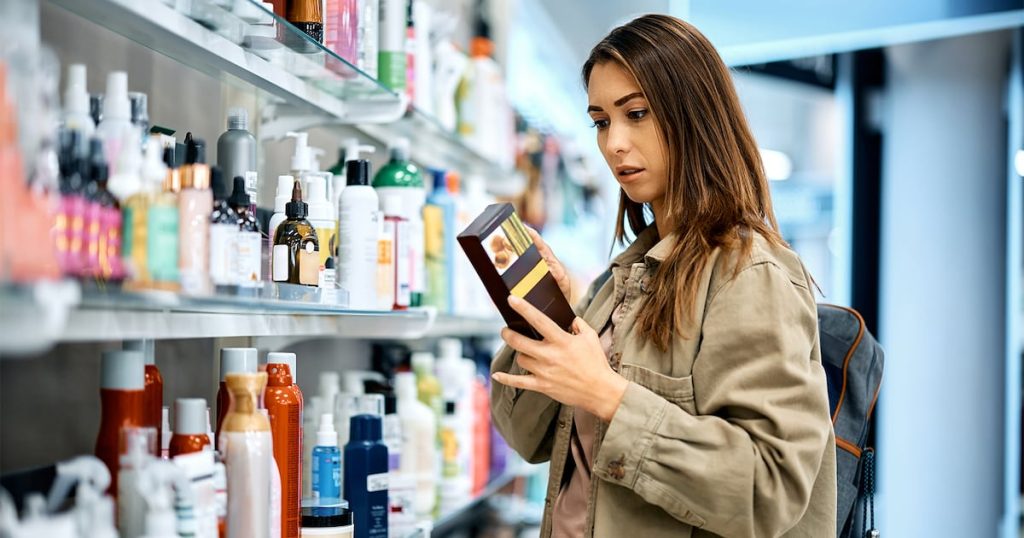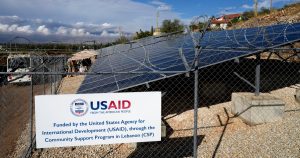
Nearly ten years on, the drugstore-to-beauty destination transformation experiment still has yet to produce encouraging results.
In the mid-2010s, US drugstores unveiled plans to revamp their stores into beauty hubs to rival the likes of Sephora by introducing expansive displays, high-end lighting, testers and knowledgeable beauty consultants. Through initiatives from CVS’s Beauty IRL shop-in-shops to Walgreen’s import of Boots best-sellers, retailers hoped to gain back the market share since ceded to specialty retailers, Amazon, Walmart and Target.
Cut to today, and customers entering drugstores still find themselves greeted by most of the same brands under pale fluorescent lights — only this time, a wide assortment of products are under lock and key.
“The customer service isn’t premium. The whole experience isn’t premium,” said Neil Saunders, managing director at Global Data. While drugstores have expanded their collections to include Gen-Z favourite labels like Bubble and E.l.f. in an effort to cater to younger shoppers, many of them — and their elders — would prefer to shop elsewhere.
The lacklustre in-store experience is further compounded by challenges to the retail and pharmacy sectors of the business. Reimbursement rates for prescription drug sales — once a significant driver of revenue — have dropped in recent years, failing to compensate for the decline in skincare and beauty sales and an exodus to online retailers like Amazon. As a result, drugstores are scaling back. CVS announced that it would cut 3,000 jobs and the retailer shut over 500 stores in 2024, while rival Walgreens plans to close approximately 1,200 stores through 2027. Rite Aid, which filed for Chapter 11 bankruptcy in 2023, has only recently emerged from administration.
“Drugstore” brands themselves are also feeling the strain. L’Oréal’s dermatological beauty division, home to skincare labels Cerave and La Roche-Posay, grew by 0.8 percent, missing analyst expectations by over 10 percent in the company’s recent earnings. Chief executive Nicolas Hieronimus said the US was the “biggest culprit” of the decline, noting particular pressure on drugstores in an October 2024 earnings call.
While brands aren’t abandoning these shelves anytime soon, they are diversifying their retail strategies away from pharmacies and doubling down on innovation, refining their products to position themselves as more premium in an effort to stay competitive.
“These pharmacies have realised, and in some cases admitted, that the [retail] business will continue to shrink,” said Brian Tanquilut, equity research analyst at Jefferies Healthcare Services. “It’s a melting ice cube. It’s just a matter of how quickly does [it] melt.”
Beauty Bets Falter
When it was first announced, analysts considered US drugstores’ pivot to beauty to be a smart move. By investing in its already-ubiquitous assortments of products across hair, skin, makeup, nails and body the retailers could capitalise on higher margins and growing consumer demand.
A series of missteps along the way, however, derailed their efforts.
When CVS acquired health insurance provider Aetna in November 2018, the Beauty IRL activations were placed on the back burner, said Tanquilit, as the beauty rollout became a “distraction” for the company’s new goal of integrating Aetna into the larger business.
Walgreens Boots Alliance pushed into beauty with the expansion of its Boots private label beauty products, which it launched in the US via Walgreens and Duane Reade. By importing best-selling UK brands like No7, Liz Earle Beauty Co., Botanics, and Soap and Glory, the retailer hoped to inject newness to the aisles — and capitalise on American interest in European pharmacy staples.
But the retailer miscalculated how long it would take these products to gain traction, said Tanquilut. “I had asked them back then ‘Who is your celebrity endorser for your launches?’ And they said that these products would do well on their own because they are established brands.”
“Not in the US, though,” he added.
Jumping Ship
Despite the turmoil facing US drugstores, brands aren’t yet ready to sever ties. They are, however, considering their options.
When CVS began investing more shelf and display space to Black-founded or Black-owned beauty brands, the textured haircare label Mielle Organics benefited greatly, said chief executive Omar Goff, whose consumer base lives in close proximity to the retailer’s brick-and-mortar locations. Goff added that 10 percent of sales are happening through the pharmacy retail channel.
Brand storytelling and discovery, however, is strained through this model, which is why the brand also partners with specialty retailer Ulta Beauty as well as Target, and is levelling up its marketing to drive awareness. As Mielle prepares to launch its first product since it was acquired by Procter and Gamble in 2023, it is also working with influencers and is launching a billboard campaign in Times Square.
For pandemic darling CeraVe, Hieronimus believes the solution to declining sales lies in product innovation. In the coming months, the brand will introduce new body care products, and since November has expanded its dermatologic haircare offerings, Hieronimus said during an October 2024 earnings call.
“In the US, we just need to bring new stuff to get consumers excited, to get that brand to accelerate again,” he said. “Young Gen-Zs went to try a few other brands. So it’s up to us to recruit them [back].”
Hieronimus told investors that the company will continue to be ambitious with its US retail strategy because of its wide portfolio of brands and price channel, and the growth the business has seen as a result of Amazon.
“It’s been a win-win partnership in terms of the quality of presentation of our brands, in terms of the way it’s managed,” he said. “In terms of prices, it’s much more controlled. In terms of quality of exposure, it’s much more controlled. And it has allowed us to indeed recruit new consumers.”
In order to hold on to brands, Saunders says the drugstore model will need a complete overhaul — a push toward premium brands, a stronger emphasis on omni-channel shopping and speedier delivery in local areas.
With the slow decline of pharmacies, however, some in the beauty space are beginning to rethink what it means to be a ‘drugstore’ brand. For Goff, the label will denote price accessibility, even when the products aren’t found on pharmacy shelves.








